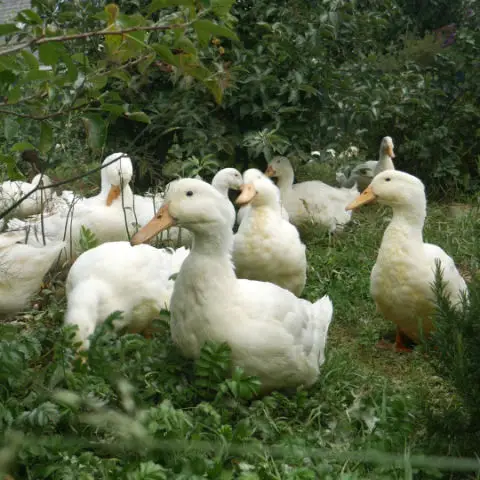Slug Control – How to get rid of slugs in garden
One of the most frequently asked gardening queries is how to get rid of slugs. Slugs and snails can cause damage to vegetables and ornamental plants in the garden. To tell whether the damage is being done by a slug or snail – look at the trail, a continuous slime trail is left by a slug and broken trails are left by snails.
I’ve read that the average UK garden has around 30,000 slugs and snails in it – try as we might we are unlikely to get rid of them all. Snails are not as numerous as slugs, but generally more visible as they rest higher up than slugs, they can do this because they have shells to prevent them from drying out.
What use are slugs and what do slugs eat?
They eat dead and decaying matter, together with woodlice they are nature’s tidiers. Unfortunately, they also like the nice young, sweet new growth of our plants!
To prevent slugs and snails damaging our plants, we need to either remove them from the area or deter them from reaching the plants.
Prevention
Preventative methods do not get rid of slugs, but they do help to reduce the damage done to your plants by the slug population. Water early morning rather than evening – don’t leave the ground moist overnight, good condition for slugs and snails
Slugs like to hide in long grass, so keep grassy areas around your beds cut short.
Keep the garden tidy of things lying around that they can hide in. Pots, bits of wood, plant trays all make excellent resting places for slugs and snails.
Clear away piles of plants that you’ve removed from the garden, whether weeds or thinning out plants, piles of decaying vegetation encourage slugs.
Start your plants in trays or pots in the greenhouse, cold frame, indoors or polytunnel, grow until a good size before planting out, so if slugs attack them, they are more likely to stand the attack and not be completely eaten away.
Consider removing raised beds to have less places for them to hide.
Use products like Andermatt’s Ewe Stop Slugs to deter slugs. Andermatt Home and Garden offer 15% discount to readers when you use the code BYTHER15 at the checkout. This is not an affiliate arrangement, I have simply organised a discount for you to try Andermatt’s products.
Barrier methods
One research project for RHS showed little effectiveness in the home remedies often suggested
- crushed eggshells
- pine bark mulch
- copper tape
- sharp horticultural grit
- wool pellets
Other research suggests that copper tape has some effectiveness.
Some people say coffee grounds around plants can deter slugs.
Slugs don’t just travel overground, they live underground, to a depth of six feet! So they can travel underneath your carefully placed layer of grit, eggshells or other barrier methods.
Removal of slugs in garden
Beer traps can work to catch some – use cheap beer, those slugs don’t care!
Pieces of wood, plant pots and trays propped against a raised bed or raised one side by a small stone make a great trap, just check them in the morning and dispose of the slugs.
Pick off by hand dispose of them by releasing in woods or putting in freezer before binning.
Night time patrol to find them. Snip with scissors and leave on a path, go back the next night and you may find many more feasting on the dead one.
Biological slug control
Nematodes – effective in short term but potentially costly and there are other predators that visit the garden free of charge.
Provide the kind of habitat that predators of slugs and snails enjoy and the natural pest/predator balance will come.
What eats slugs?
Some birds, frogs, toads, hedgehogs, slow-worms and ground beetles
Grow trees and shrubs to encourage birds to the garden
Hedgehog house, pile of sticks and leaves in a quiet corner
Wildlife pond, left undisturbed
Ducks are superb slug and snail detectives, if you have the space for just a pair of ducks, they can make a huge difference, but they need supervising in the veg garden as they are also partial to many of the things you grow.

My thoughts
As a gardener I find slugs a pain in the proverbial, but they also have an essential role in the ecosystem of the garden. I want them to do their thing in the compost heap and on fallen leaves that I haven’t scooped up, but not to destroy my plants. I want them to be food for the birds, hedgehogs, frogs, toads and beetles that live here.
For me, it’s about finding a balance, encouraging masses of predators, using the ducks, reducing hiding places except for those where I’d like the slug to eat stuff.
Creating a habitat for predators also means I’m creating a habitat for slugs which is where planting larger plants comes in. Perennials that might be vulnerable, especially things like hostas, solomon’s seal could use grit, coffee grounds etc to try to deter slugs.
I’m often asked if wood chips encourages slugs, I don’t know, but I do know that if slugs are filling up on the decaying wood chips they are less likely to be eating my plants. Every day I see evidence of birds searching through the wood chips for things to eat and that includes slugs and snails.
So, living in this often damp climate, we aren’t going to get rid of slugs and snails, but there are plenty of things that we can do to reduce their impact on our plants.
Accompanying video on my YouTube channel.
- Beautiful Bog Garden Plants - December 5, 2025
- Climbing plants for small gardens - November 21, 2025
- Hard working plants - November 7, 2025
